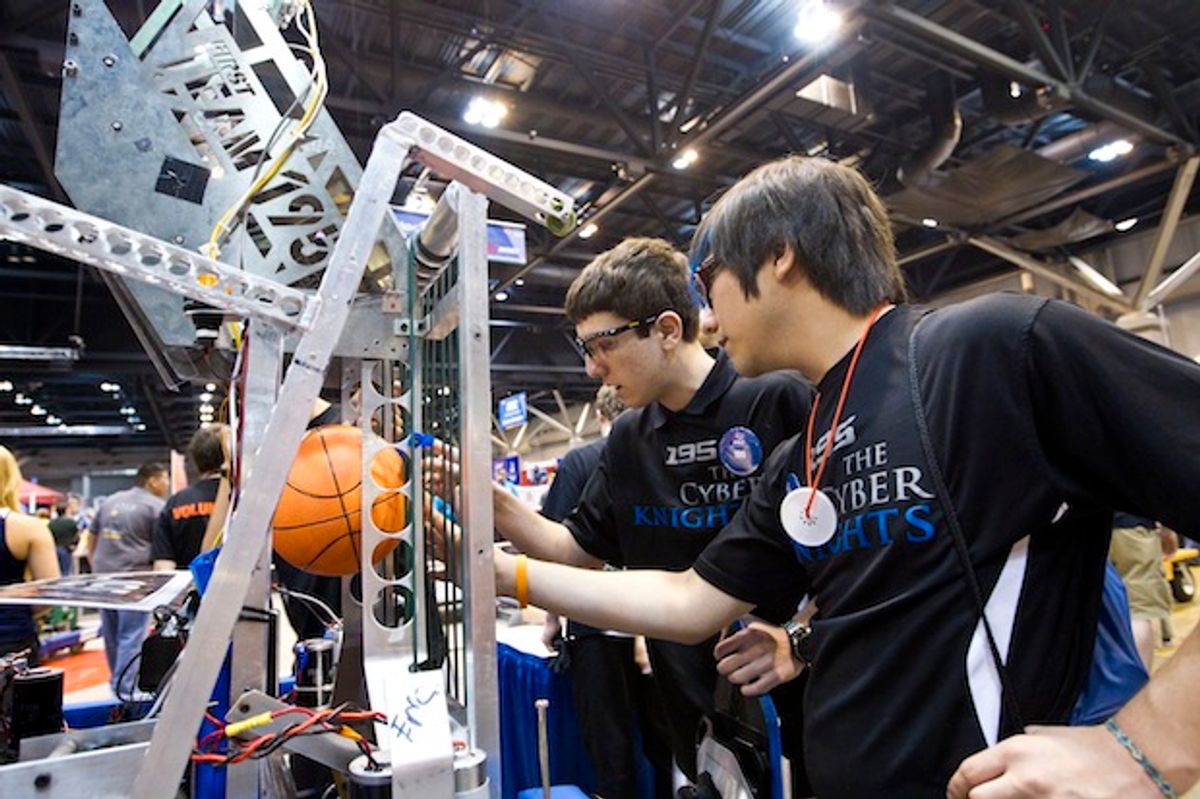FIRST, the popular robotics competition created by Dean Kamen to foster science and engineering, is known to attract thousands of high school students who organize into teams to build robots that can drive around autonomously and shoot balls and discs to score points. Now the teams are getting a new controller that will let them design robots that are even faster, smarter, and stronger.
This morning at the FIRST Championship in St. Louis, FIRST (For Inspiration and Recognition of Science and Technology) and National Instruments announced a next-generation embedded robotics control platform. Codenamed Athena, the new controller is set to replace the current system, NI’s CompactRIO, in the 2015 season of the FIRST Robotics Competition (FRC).
Full technical specs are still under wraps. NI plans to unveil Athena at NI Week on 5-8 August, in Austin. But we spoke with Ray Hsu, manager of K-12 and academic partners programs for NI, to get some more details. Hsu says the new controller is not just an updated CompactRIO; it’s a new design, still based on the NI RIO architecture, but smaller, faster, and less expensive.
And, Hsu, adds, it’s also “super rugged.” That’s because one thing NI learned watching the FIRST teams using its controller is that, as Hsu puts, “Kids will do anything to it.” The controller gets dropped onto the hard floor; tiny metal shavings get into its modules; some teams have even left it in the rain. Athena is designed to better handle this abuse.
FIRST teams have been using the CompactRIO controller [pictured right] since 2009. A modified version was introduced in 2011. But last year, FIRST, based in Manchester, N.H., announced an open request for proposals for a new controller. The RFP included a host of requirements, based on four years of experience with the existing hardware and feedback from students and mentors. Several vendors submitted proposals, and in the end FIRST decided to stick with NI.
Another Athena improvement is making the system even easier to use. “We wanted to simplify things for rookie teams, to let them get a working robot very, very quickly,” Hsu says. At the same time, however, experienced teams want a more advanced, not a simplified, device. So NI had to make the system modular and expandable. In terms of software, teams will still be able to use LabVIEW, NI’s graphical system design software, to program their robot behaviors. Athena will also support C++ and Java.
As part of its partnership with FIRST, NI will donate the controller and LabVIEW for all existing and new FRC teams. FIRST and NI will start testing Athena next year in preparation to the 2015 season. What will those smart kids be able to do with an even faster, better controller? I guess the real question is, Is there anything they will not be able to do?
Erico Guizzo is the Director of Digital Innovation at IEEE Spectrum, and cofounder of the IEEE Robots Guide, an award-winning interactive site about robotics. He oversees the operation, integration, and new feature development for all digital properties and platforms, including the Spectrum website, newsletters, CMS, editorial workflow systems, and analytics and AI tools. An IEEE Member, he is an electrical engineer by training and has a master’s degree in science writing from MIT.




